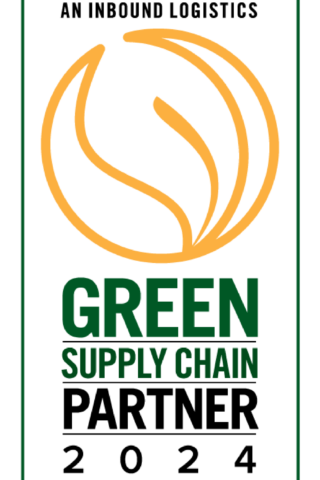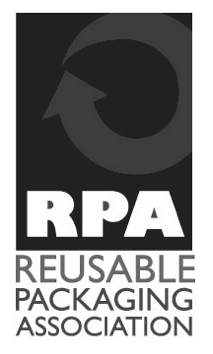Consider IT asset management in the context of Newton’s third law (that every action has an equal and opposite reaction). It’s not obvious, but the “reactions” to managing the flow of IT assets through an organization are more easily imagined as “impacts.” And those impacts need to be managed by IT departments and governed by sound, ethics-based policies.
Earlier this year Onepak’s Vice President of Sustainability Solutions, Shawn Stockman, moderated and contributed to a discussion on this topic at IAITAM ACE 2023 in Nashville, Tennessee. Participants in the panel were Bob Houghton from Sage Electronics, Sue Krautbauer from Digitunity, and Ashley Clinton from Houston ISD. Key points from that panel have been expanded on here.
Defining Impacts
The panel discussion outlined the nature of potential impacts and how to manage them. For example, there is an environmental impact each time a company purchases new equipment, since every electronic device uses rare earth materials and produces carbon during the manufacturing process and over its lifetime use.
There are additional impacts once an asset leaves the organization at the end of a device’s useful life, which may affect both the environment and the community, if assets are reused locally.
The policies that drive decisions around purchasing, donating or disposing of IT assets affect not only the IT departments who are responsible for executing those decisions, but the notion of value creation (or erosion) of the organization and its brand among consumers and shareholders.
Often focused on the lifecycle of hardware assets, impact management may not seem like a critical area of concern, however IT asset managers (ITAMS) are in a key position to lead the way towards positively impactful company policies.
So how can ITAMS lead progress toward optimizing impacts?
The Elephant in the room: E-Waste
While ITAMs can direct the purchasing department to choose low-impact, energy efficient equipment, the clearest environmental concern that ITAMS are positioned to address is the issue of e-waste.
53.6 million metric tons of electronic waste was generated worldwide in 2019, with only 17.4% of it being properly recycled. The effects of which are far-reaching, as e-waste accounts for 70% of the entire waste stream’s toxicity (Global E-waste Monitor 2020).
The easy answer in the industry is to place the primary responsibility of ethical destruction on 3rd parties hired to manage this waste, IT Asset Disposition Providers or ITADs.
However, there are necessary efforts that go beyond finding the lowest cost vendor or opting for bundled savings with logistics. Understanding how ITADs conduct their business is imperative to making the choice that minimizes environmental impacts.
Questions for evaluating ITAD partnerships:
- What certifications and accreditations do you hold for environmental responsibility and data security (e.g., R2, e-Stewards, ISO 14001, NAID)?
- How do you ensure your downstream partners and recycling vendors also adhere to environmentally responsible practices and maintain relevant certifications?
- Can you provide transparent reporting and documentation on the entire ITAD process, including data destruction, logistics, recycling, and disposal methods?
These questions will not only better inform your choices, but also guide a more holistic approach to the process. It’s critical that ITAD tactics support lifecycle strategy in alignment with total cost of ownership, policy, and sustainability goals.
Regardless of other variables, financial and sustainability results are optimized by reusing more and recycling less. That in turn means that purchasing decisions become equally as important.
Prioritizing the purchase of equipment that enables modularity for part replacements and repairs, energy efficient models, and understanding manufacturers’ own sustainability initiatives are all ways to apply this critical thinking across lifecycle stages.
Community: Bridging the Digital Divide
The digital divide highlights the gap between those who have access to information technology and those who are excluded due to socio-economic factors. In sum it may sound less than dramatic, but consider navigating job applications, school assignments, or health appointments without any personal devices or reliable internet access.
In 2021, the Pew Research Center reported roughly a quarter of adults with household incomes below $30,000 a year (24%) say they don’t own a smartphone. About four-in-ten adults with lower incomes do not have home broadband services (43%) or a desktop or laptop computer (41%).
The steps discussed previously that ITAMS can take to evaluate their hardware asset lifecycles can reveal additional opportunities surrounding this issue, especially around device access.
Devices no longer suitable for the needs of a company may very well still suit the needs of the community and depending on the quality of your decisions around repairability and longevity, devices could potentially provide benefits for years to come.
To do this effectively, IT departments will need good data and even better partnerships. Good data will isolate the window of opportunity for donating useful equipment while limiting company loss, and strong partnerships provide direction on where it can go to effectively meet the biggest needs in local communities.
Most companies already have corporate social engagement strategies and social impact objectives that these efforts only strengthen. For those organizations that do not have dedicated resources for these purposes, IT departments can confidently lead the way.
Fostering Ethical Best Practices
Creating policy and codes of conduct that foster ethical decision-making can happen concurrently as groups identify their areas of impact.
As discussed, ITAMS can ensure that their organizations maintain transparency through robust IT asset management protocols. This in turn keeps businesses in compliance with relevant regulations, industry standards, and best practices. Data security, privacy, and risk management should be evaluated as well as the environmental and social considerations.
By adhering to stringent data security standards such as the General Data Protection Regulation (GDPR) or the California Consumer Privacy Act (CCPA), ITAMs can demonstrate their commitment to safeguarding both individual privacy and corporate integrity.
Internal communication also comes under scrutiny. How easy is it for departments to collaborate, solve problems, or make changes? Do they ever even meet to discuss concerns?
By nurturing a culture of openness and collaboration among stakeholders from various departments, ITAMs can facilitate discussions that not only promote efficiency, but also make individuals feel heard. Fostering this cross-functional dialogue can ensure that these diverse perspectives are considered, promoting a comprehensive approach to IT governance.
The Business Case for IT Impact Management
There is little debate that integrating impact factors into IT asset management practices can lead to significant long-term benefits. Companies that prioritize sustainability and community engagement are reporting stronger brand reputations, customer loyalty, and employee retention rates.
By keeping IT impact management a priority, ITAMs can elevate their organizations to new heights of ethical conduct and corporate responsibility. In doing so, they not only lay the groundwork for progress but also reaffirm the enduring relevance of their roles in the ever-changing world of technology.
The convergence of IT impact factors is no longer a matter of choice but a strategic imperative, and IT asset managers have an opportunity to pioneer the kind of change that contributes to a better world with a bright future.
See you out there.








